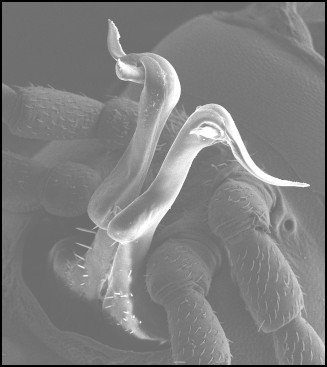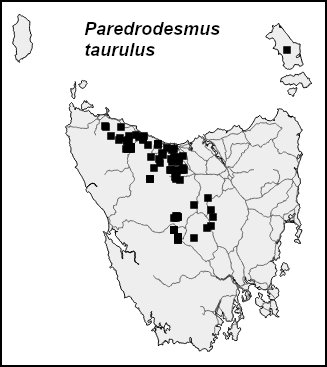Polydesmida: Dalodesmidae: Paredrodesmus

Paredrodesmus taurulus Mesibov, 2003
Paredrodesmus species are ca 10-12 mm long. Most are tan in body colour, but P. purpureus is reddish-purple. The ozopores are large and clearly visible on all segments which have them (5 and 7-18). Positive identifications can only be made by examination of the male gonopods, especially with the western species, which have overlapping ranges. However, both males and females of P. bicalcar are recognisable by their forked "tails" (image below).
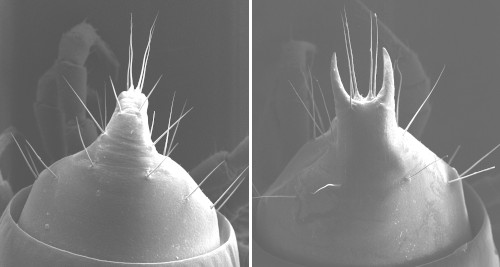
Top views of "tails" of P. taurulus (left) and P. bicalcar (right)
Paredrodesmus species are shallow-burrowing millipedes with a preference for richly organic soils. They are gregarious, and a small patch of forest humus can yield hundreds of individuals. P. taurulus can be abundant in pine plantations and P. purpureus is abundant in eucalypt regrowth arising from clearfall-and-burn silviculture.
I think I've collected a Paredrodesmus species (undescribed) in wet forest in Victoria, which means the genus is not endemic to Tasmania. All the Tasmanian species are endemics, however. Tasmanian Kebodesmus zonarius looks like a Paredrodesmus but has a H+20 body plan rather than H+19.
Paredrodesmus aceriodendron Mesibov, 2003
Sometimes locally abundant in dry eucalypt forest in the southern portion of the East Coast, including Maria Island.
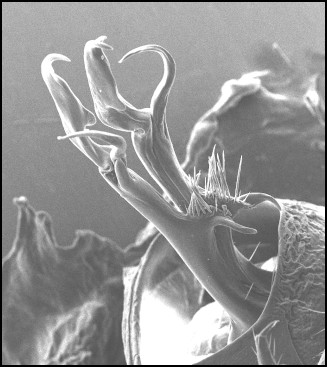
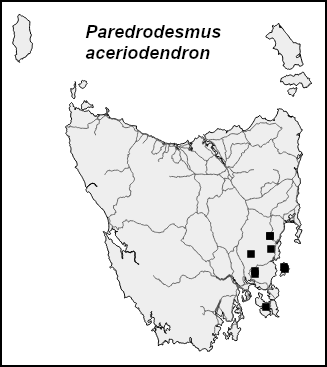
Paredrodesmus australis Mesibov, 2003
Uncommon in wet eucalypt forest and rainforest in south central Tasmania.
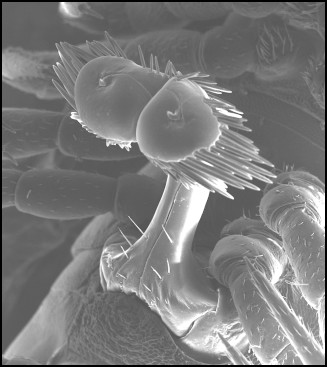
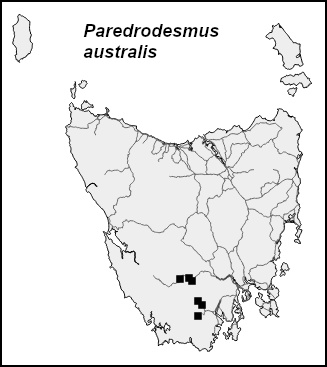
Paredrodesmus bicalcar Mesibov, 2003
Mainly in wet eucalypt forest and rainforest.
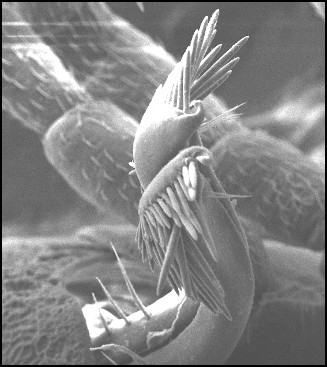
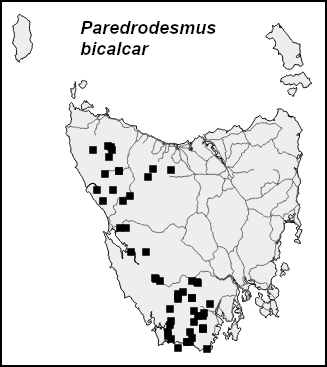
Paredrodesmus monticolus Mesibov, 2003
Uncommon in wet eucalypt forest and rainforest.
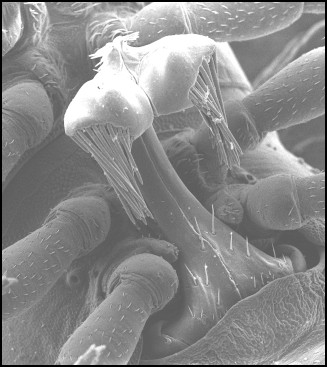
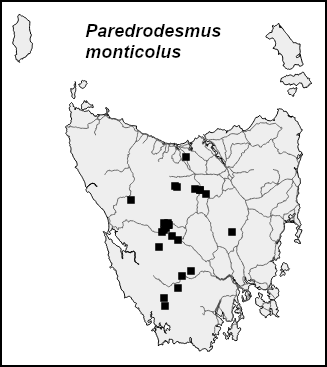
Paredrodesmus purpureus Mesibov, 2003
Fairly common in wet eucalypt forest and rainforest in the southeast, including Bruny Island.
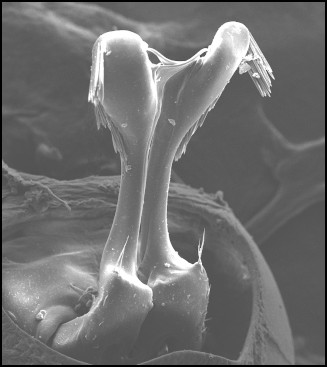
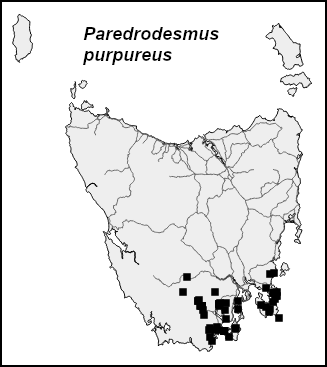
Paredrodesmus taurulus Mesibov, 2003
Locally abundant in the north and northwest, mainly in wet eucalypt forest. The one Flinders Island record (see map) is probably an accidental translocation.
